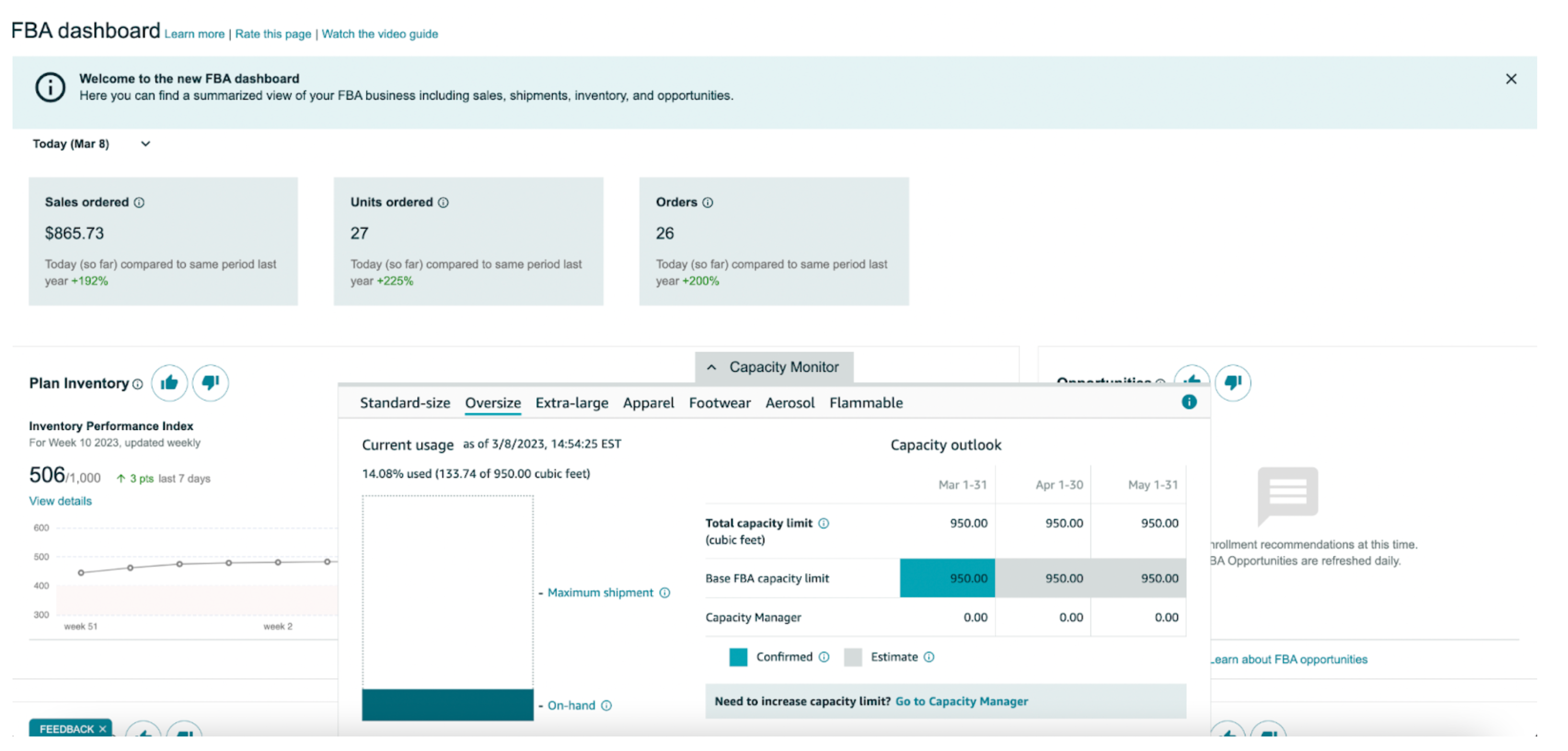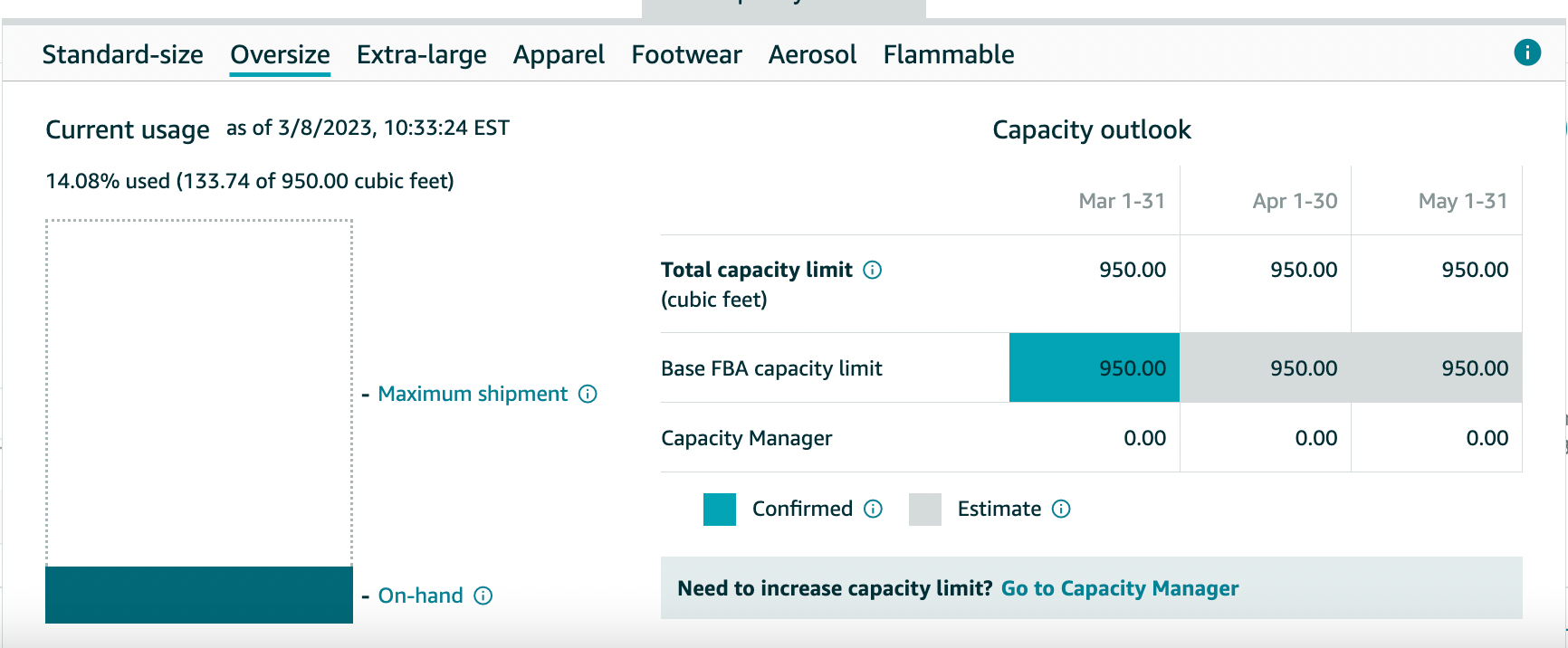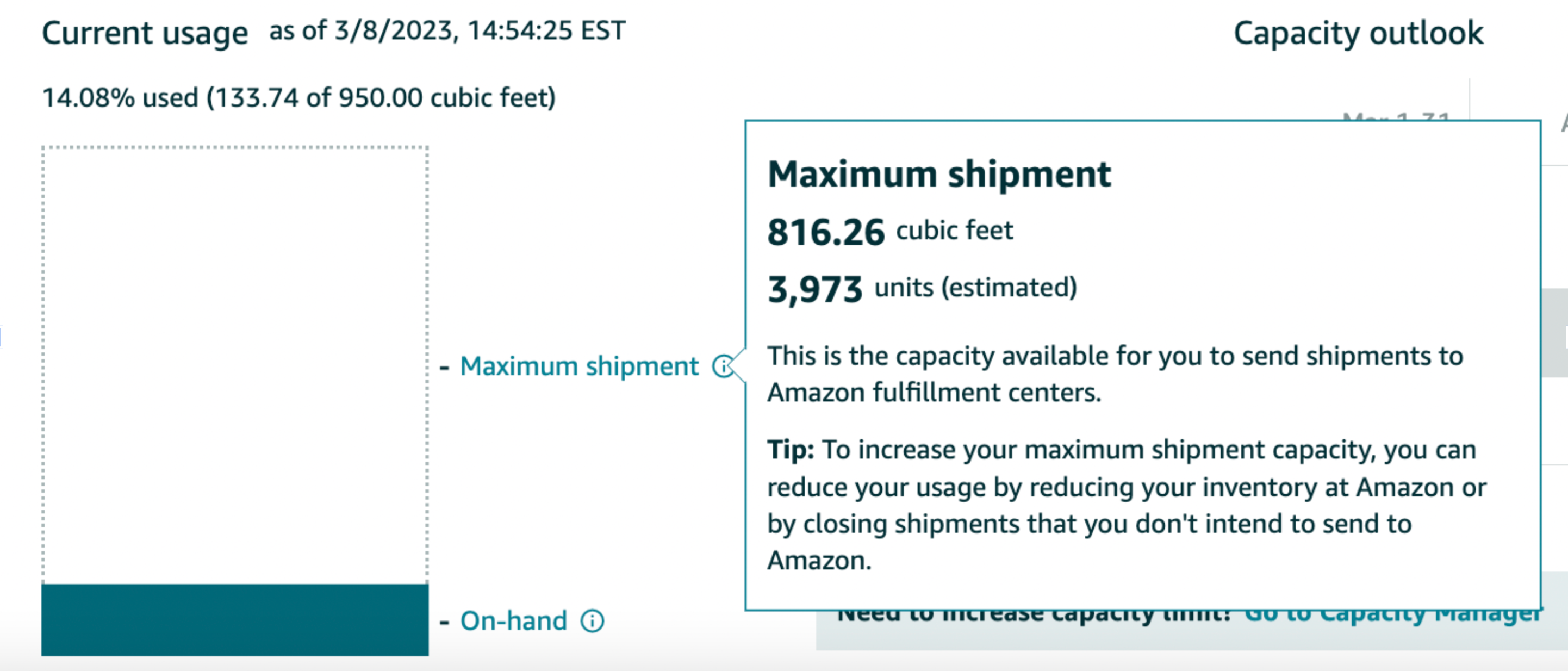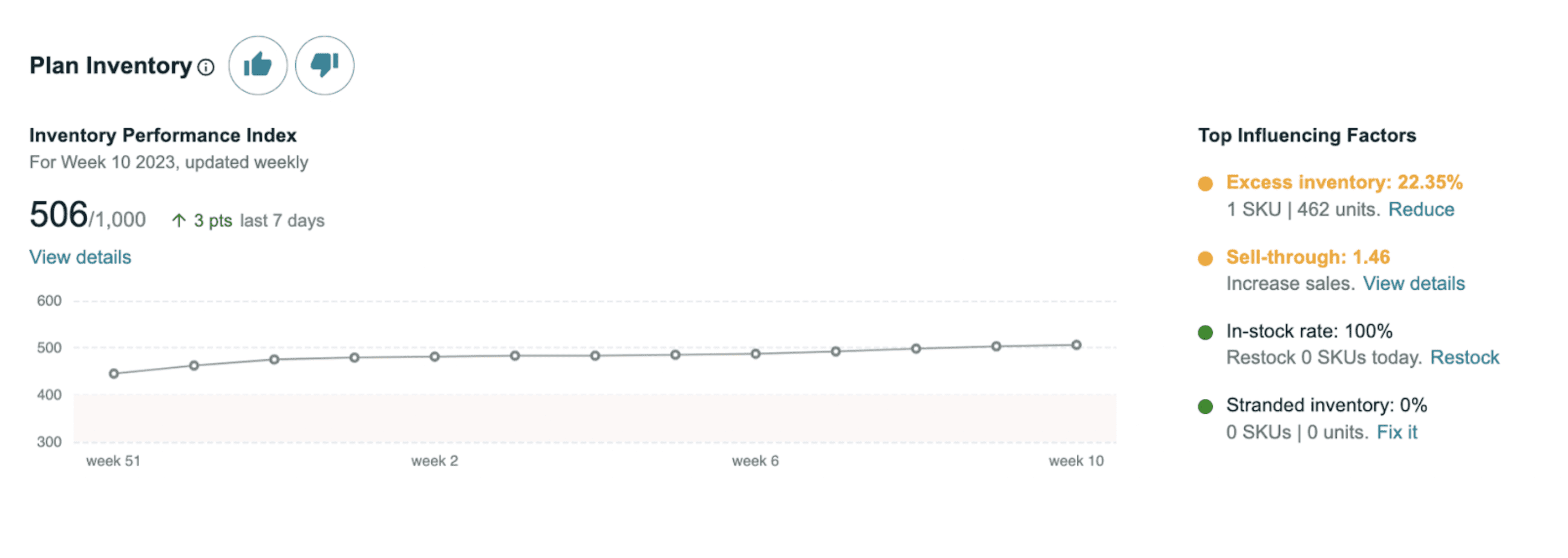Over the past couple of years, Amazon has changed its FBA storage limits a few times. These changes caused confusion and frustration for sellers as it would limit, or in some cases, reduce the amount of inventory FBA sellers can send to Amazon’s fulfillment centers.
Recently, Amazon had both weekly restock limits and quarterly storage volume limits, which — again — caused a lot of confusion.
Effective March 1st, 2023, Amazon has removed the weekly restock limits and quarterly storage volume limits and replaced them with a single monthly capacity limit, called FBA capacity limits.
Continue reading to learn more about Amazon’s new streamlined FBA capacity management system.
What are FBA capacity limits?
FBA capacity limits are monthly limits that determines how much inventory sellers can send and store at Amazon. The new capacity limits will give most sellers more inventory capacity and control than the previous FBA inventory storage and restock limits.
FBA capacity limits are set during the third week of each month and help you plan up to three months in advance with estimated capacity limits. Each storage type in your account will have its own capacity limits (standard size, oversize, etc.).
Your FBA capacity limits will be heavily affected by your IPI score within the Inventory Performance section of Seller Central. The higher your IPI score is, the higher your capacity limits will be.
The top influencing factors of your IPI score include:
- Excess inventory: You want to avoid storing stale inventory that is not selling and accumulating monthly storage fees.
- Sell-through rate: You want this to be as high as possible. The sell-through rate is determined by your sold and shipped units over the past 90 days divided by the average number of units in stock in Amazon’s fulfillment centers.
- In-stock rate: Amazon wants you to keep fast-selling items in stock as much as possible.
- Stranded inventory: Stranded inventory is when you have inventory stored in Amazon’s fulfillment centers, but there’s no active offer for the product. Keep this at 0%.
Here’s a quote from one of Jungle Scout’s Amazon experts, Jake Zaratsian:
“It’s a relief that we can now forecast storage limits up to 3 months in advance! Amazon’s becoming more transparent with how they’re calculating our limits, and I believe it’s now more clear than ever that IPI score is king. In particular, sell-through rate appears to be the most influential factor, and I expect more sellers will closely monitor the inventory age of their in-stock units.”
According to Jake (and I agree), the sell-through rate will be the most influential factor regarding capacity limits. This is because Amazon FBA is a fulfillment program at the end of the day, not a storage facility. They want you to sell your inventory as fast as possible.
The quicker you sell your inventory, the higher your capacity limits will become.
READ MORE | How to Improve Your Amazon Inventory Performance Index Score
Who is subject to FBA capacity limits?
New professional sellers will not be subject to capacity limits because Amazon has not had the time to measure your inventory performance. Professional accounts that are at least 39 weeks old, will have capacity limits.
What if you need more storage space?
If you feel like you do not have enough capacity for your products or are launching a brand-new product and need the room, sellers can request additional capacity based on a “reservation fee.” The reservation fee is a bid against other sellers.
The sellers with the highest reservation fees will get priority over those who bid lower. When additional capacity is granted, a seller’s reservation fee can be offset by earning performance credits from the sales generated from the additional capacity.
The performance credits are designed to offset up to 100% of the reservation fee, meaning sellers will not have to pay reservation fees as long as their new inventory sells through.
See again how vital the sell-through rate is?
READ MORE | Amazon Inventory Management 2023 Guide
How to access the FBA capacity manager
To view your Capacity Monitor, visit the new FBA dashboard in Seller Central. This section shows a summarized view of your FBA business, your capacity usage per storage type, and your estimated limits for the next three months. 
The capacity monitor also displays a graph that visually represents your inventory on hand in both volume (cubic feet) and number of units, as well as the maximum shipment allowed based on your current usage.


Managing inventory can be a difficult task, even for big brands. For example, Funko Pop announced last week that it plans to toss over $30 million worth of excess inventory as they can no longer afford to store the figurines.
While this is an extreme example of over-ordering inventory, sellers should use this as a cautionary tale before deciding on how much inventory to purchase for their businesses. A proper inventory management system can help forecast future sales so you don’t end up stuck with product you cannot sell.
EASILY MANAGE YOUR FBA INVENTORY | Need an effective way to plan and manage your Amazon inventory? Jungle Scout’s Inventory Manager accurately predicts how much stock you should order and when to order it, preventing stockouts and helping you avoid costly storage fees.
How FBA capacity limits affect Amazon sellers
If you’ve been a seller long enough, you know by now that you must remain alert when selling on Amazon. Meaning, Amazon is constantly updating/changing its policies and functions, forcing sellers to adapt quickly.
With this particular change, we believe it is a good thing (especially compared to other inventory storage changes in the past) because it gives sellers a clearer understanding of how much inventory you can send per storage type to Amazon.
Also, Amazon states this change will provide most sellers with greater capacity limits, which is a good thing.
Amazon will reward you with more storage capacity as long as you sell through your current inventory quickly. If it sits for months without selling, don’t expect more room.
Remember, if you need more room for a new product launch or other products you offer, you can bid on more storage capacity. We only suggest this if you are confident the new inventory will sell, as Amazon will reward you with performance credits that offset the reservation fees.
Focus on your IPI score
One of the biggest takeaways: focus on improving your IPI score. The minimum threshold Amazon wants your score to be is 400. If you go below that, you can expect your capacity limits to decrease.
Amazon will show you the top influencing factors and what is negatively (and positively) impacting your score – so use that information to improve your inventory performance.

What do you think about this recent update? Let us know in the comments if you believe this will help or hurt your Amazon business.
Want to learn more about how you can use Jungle Scout to launch, grow, and run your Amazon business? Click the “Learn More” button below!

 No Comments
No Comments